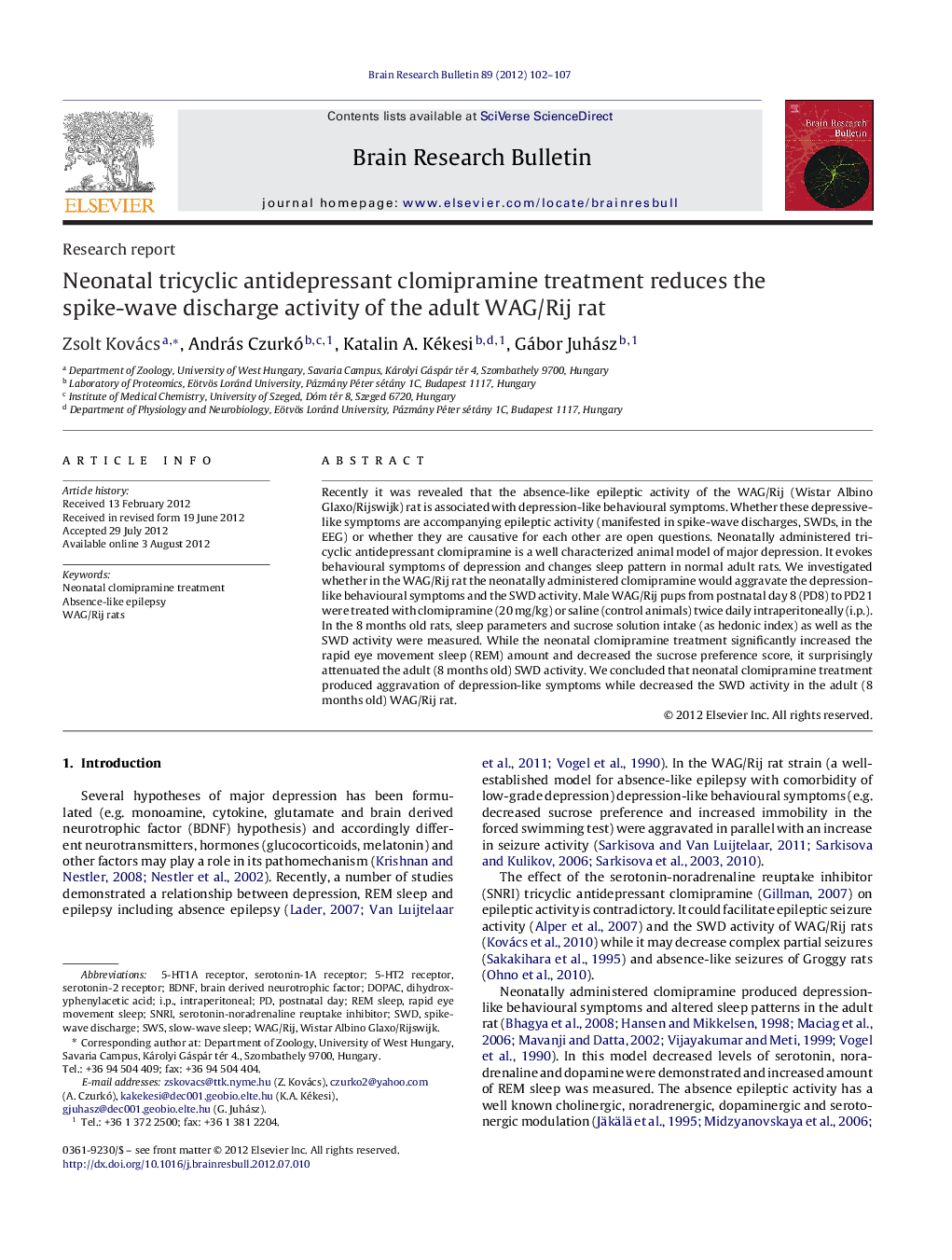| Article ID | Journal | Published Year | Pages | File Type |
|---|---|---|---|---|
| 4318966 | Brain Research Bulletin | 2012 | 6 Pages |
Recently it was revealed that the absence-like epileptic activity of the WAG/Rij (Wistar Albino Glaxo/Rijswijk) rat is associated with depression-like behavioural symptoms. Whether these depressive-like symptoms are accompanying epileptic activity (manifested in spike-wave discharges, SWDs, in the EEG) or whether they are causative for each other are open questions. Neonatally administered tricyclic antidepressant clomipramine is a well characterized animal model of major depression. It evokes behavioural symptoms of depression and changes sleep pattern in normal adult rats. We investigated whether in the WAG/Rij rat the neonatally administered clomipramine would aggravate the depression-like behavioural symptoms and the SWD activity. Male WAG/Rij pups from postnatal day 8 (PD8) to PD21 were treated with clomipramine (20 mg/kg) or saline (control animals) twice daily intraperitoneally (i.p.). In the 8 months old rats, sleep parameters and sucrose solution intake (as hedonic index) as well as the SWD activity were measured. While the neonatal clomipramine treatment significantly increased the rapid eye movement sleep (REM) amount and decreased the sucrose preference score, it surprisingly attenuated the adult (8 months old) SWD activity. We concluded that neonatal clomipramine treatment produced aggravation of depression-like symptoms while decreased the SWD activity in the adult (8 months old) WAG/Rij rat.
► Male WAG/Rij pups were treated with clomipramine (PD8–PD21; 40 mg/kg; i.p.). ► The treatment reduced the sucrose preference (at 8 months). ► At the same time, the treatment decreased the SWD activity of WAG/Rij rats. ► Depressive symptoms and seizure activity may not run in parallel in the WAG/Rij rat.
